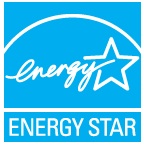 Household appliances are responsible for 20%-30% of a home’s energy use and about 25% of its indoor water use. Thankfully, we have ENERGY STAR labels for appliances, so I don’t have to look up every different standard of energy efficiency measures for each type of appliance. I just have to look up our appliances in the list of Energy Star products. The first part, 9.1 High-Efficiency Appliances, awards one point for the refrigerator (a), a half point for all ceiling fans (b), a half point for dishwashers (that also use ≤ 6 gallons per cycle) (c), and a half point for the clothes washer (d).
Household appliances are responsible for 20%-30% of a home’s energy use and about 25% of its indoor water use. Thankfully, we have ENERGY STAR labels for appliances, so I don’t have to look up every different standard of energy efficiency measures for each type of appliance. I just have to look up our appliances in the list of Energy Star products. The first part, 9.1 High-Efficiency Appliances, awards one point for the refrigerator (a), a half point for all ceiling fans (b), a half point for dishwashers (that also use ≤ 6 gallons per cycle) (c), and a half point for the clothes washer (d).
(a) Our refrigerator is made by Bosch. When we were looking at appliances, I chose only from the list of Energy Star qualified refrigerators. Our particular refrigerator model has already been discontinued, but luckily it is still listed on the Energy Star website as using 28% less energy than the standard. One point. (Why aren’t freezers included in this list?)
(b) We have no ceiling fans in our house, so no point there.
(c) We have a Miele dishwasher whose model has been discontinued, but the exact same one with a new model number is Energy Star qualified, with an EF factor of 0.74, and uses 5.6 gallons per cycle. A half point.
(d) We have a Miele front-loading clothes washer which is Energy Star labeled. A half point. (Why aren’t dryers, ovens, stove tops, etc. included on this list?)
The second part, 9.2 Water- Efficient Clothes Washer, awards one point for clothes washers with a modified energy factor (MEF) ≥ 2 and water factor (WF) < 5.5. (The Energy Star requirements, as of July 2009, require all qualified products to have a Modified Energy Factor (MEF) of 1.8 or greater as well as a Water Factor (WF) of 7.5 or lower. On January 2011, it will change to MEF ≥2, so the same as LEED, and WF < 6 — just slightly higher than LEED.) Now, what do these measurements actually mean?
The United States DOE and EPA, who together manage the Energy Star program, provide the following definitions:
MEF is the quotient of the capacity of the clothes container, C, divided by the total clothes washer energy consumption per cycle, with such energy consumption expressed as the sum of the machine electrical energy consumption, M, the hot water energy consumption, E, and the energy required for removal of the remaining moisture in the wash load, D. The higher the value, the more efficient the clothes washer is. The equation is shown below:
MEF = C / M + E + D Water Factor, WF, is the present water performance metric that allows the comparison of clothes washer water consumption independent of clothes washer capacity. Manufacturers must submit their water consumption factors with their ENERGY STAR qualified clothes washers.
WF is the quotient of the total weighted per-cycle water consumption, Q, divided by the capacity of the clothes washer, C. The lower the value, the more water efficient the clothes washer is. The equation is shown below:
WF = Q / C
So, how does our model measure up? Our Miele clothes washer has an MEF rating of 2.4 and a WF rating of 4.23, which qualifies for an additional one point. That’s 3 points total for our appliances.
I would like to add that while these are all important, there are many more electronic items that can really add to a home’s energy use: microwaves, sump pumps (ours runs ALL the time), televisions, extra bar-size fridges and freezers (which are not Energy Star rated), computers, etc. Like lighting and air conditioning, it ends up being the homeowner’s responsibility for how much energy is really saved. Starting out with more efficient appliances is definitely important, but the operation of a home can have a huge impact.
EA Prescriptive Path points so far: 18

While this section is normally only relevant for the prescriptive path, and we are using the performance path, we get an additional 1.5 points under Exemplary Performance for our energy efficient clothes washer. The HERS index rating does not take this into account by itself.